
The QX10 came along in 1983 and was fairly well known for being, well, quite mundane really. It was powered by a 4MHz Z80 with up to 256kb
of RAM, but with a separate graphics board based on the Intel D7220 which could combine text and hi-res graphics on screen at speed. This was needed because the
machine contained a lot of fonts in ROM that were used in EPSON's printers, and the QX10 could draw them all at once for a pretty good WSYIWYG environment.
The machine ran either CP/M-80, CP/M-86 or a less well known CP/M clone called TPM-II which was written by Rising Star Industries. In
the US the machine came with TPM-II and an office suite called Valdocs which was less than well received thanks to it being slow and buggy. Unfortunately,
things with Rising Star didn't improve until they'd parted ways with EPSON, and the last version of Valdocs was pretty usable. Valdocs also needed a special
HASCI keyboard.
Here in Europe, Japan and NZ the machine came with a normal keyboard and CP/M meaning it was up to you to find your own productivity
suite. In Japan the machine was known as the QC-10.
There were three things that separated the QX10 from other CP/M machines of the time though, the first was an expansion bay with its
own cover which had 5 slots. Most European systems came bundled with a ROM board which featured 6 ROMs containing a lot of EPSON fonts, and there was also an
interface for an external Winchester disk as well as an Intel 8088 interface by Titan called the QX-PC which allowed your QX10 to run MSDOS. The machine
wasn't capable of running Windows. A 1MB board was also available - imagine, ONE MEG in 1983!
The second thing to set this machine apart from the others were the in-house designed and produced 1/3rd height floppy drives. These
were unique in that they didn't use the traditional stepper motor for moving the head, rather they used a voice coil motor similar to what was being
introduced with the later generation of Winchester drives. It was the lack of stepper motor that meant the drives could be so slim.
Finally, the machine was notable because it contained NO proprietary chips. It was all 74-series TTL and stock ICs from NEC and others.
There were no PALs, GALs, or anything that could prevent a suitably inquisitive hobbyist from repairing the machine themselves. EPSON also provided a complete
service guide including full schematics.
This machine came to me via an excellent bloke in Brighton called Stephen Ancell, who answered my call for a QX10 after the March '23
'Made In Japan' retro weekend at the Centre For Computing History in Cambridge UK. The Museum had their own QX10 out on display and I mused that I'd been
after one for 20 years. Stephen offered me his so I went down to collect it one wet weekend. It was missing its monitor cable, but I found a company in the
US called IEC in Littleton CO still making them for around $13, thanks for the quick delivery, Joe!
People have been imaging QX10 disks for years, so it didn't take long to find images from the usual suspects (Don Maslin, Dave
Dunfield et al) as well as helpful folk who'd dumped the entire Valdocs collection - all versions. Armed with those I set about making floppies with my
trusty Greaseweazle V7, but they all failed to boot. Either my floppy drives are becoming suspect or my disks are. I found someone on
the VCFED forum who helpfully provided some quick wins for using a Gotek however, and between raw images and HFE images I've got CP/M and a few utilities
running, see pics. Since the QX10 is primarily a CP/M machine this means it MUST run WordStar, Zork and Catchum. I already have WordStar working nicely,
so some effort needs to be put into getting the other two down into the disk images.
Cheers Stephen!
Pictures
 |  | 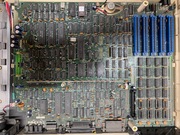 |  |
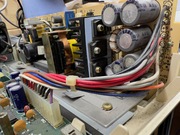 | 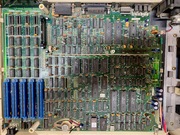 | 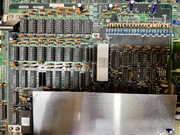 |  |
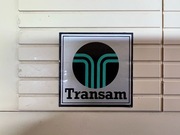 |  | 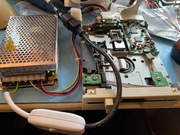 | 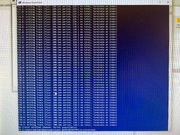 |
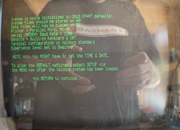 | 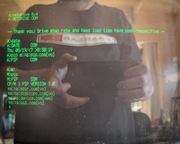 | 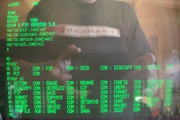 | 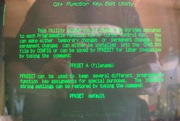 |
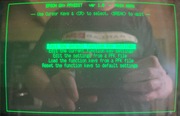 |  | 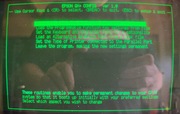 | 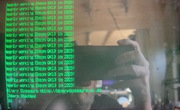 |
 | 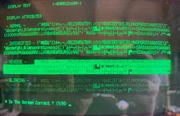 |  |  |
Update 08/05/23
Pulled the B drive from the machine to use as my Greaseweazle writing drive and that proved to be worthwhile. I created disks for CP/M 2.2, CP/M 3.0, Valdocs Plus and a couple
of others. With the machine booting that way I reinstalled the drive and set about getting serial comms running back to my workshop PC which has RealTerm installed. Surprisingly,
the RS232C port sprang into life immediately and I was able to transfer down hexified versions of CP/M favourites Catchum and Ladder. With the CP/M LOAD command these
could be turned into executables so the next issue was finding out which of the known CP/M machines in the Catchum config utility was the closest to the QX-10. Since one of the machines listed was
'NEC' I plumped for that since all the main chips are made by NEC and I guessed the NEC APC was a close match (it was also a Z80-powered CP/M machine). Success! Catchum and Ladder running :D
I also discovered that taking the screen protector off was very beneficial to pictures of the screen. Apologies for previous glare. The Valdocs disks will boot but as you can
see there's screen corruption which makes me think there's a RAM fault on the video board. There's 16 4116 RAM chips on there which could've failed so they need to be tested.
Next up, install Dave Dunfield's CPT utility so I can image the new disks I've created.
Pictures
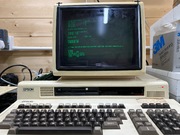 |  | 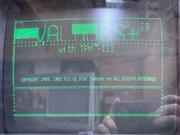 | 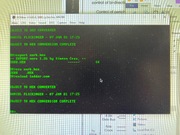 |
 | 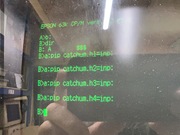 |  | 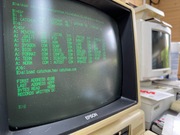 |
 | 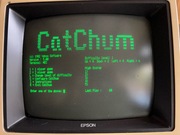 | 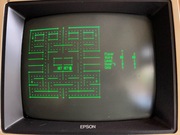 | 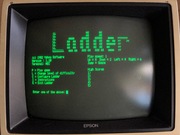 |
 |  |  |  |